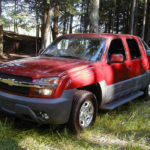Q: I have a 2002 Chevrolet S-10. Code P0300 “Random or Multiple Cylinder Misfire Detected” is set in the powertrain control module (PCM) and the vehicle runs rough. What could be the cause?
– Tony Hilton
A: Hello, Tony. As you might know, diagnostic trouble codes (DTCs) don’t tell you exactly what’s wrong with a vehicle. Instead, codes merely serve as a starting point for further diagnostics.

Code P0300 has many potential causes (as this article outlines), making the code tricky to diagnose. There are, however, a couple of common problem areas with the 4.3L engine that you might want to keep in mind.
One is the central port injection assembly (often referred to as the “spider” assembly), located under the intake manifold. Instead of using traditional multi-port fuel injectors, the spider assembly relies on a fuel metering body and six tubes with poppet valves. Unfortunately, the design is known to suffer from various issues that can trigger code P0300.

Another common problem area is the distributor assembly (as well as the cap and rotor). With your truck, the distributor is non-adjustable because the powertrain control module (PCM) controls spark timing.
Once again, these are just a couple of common problem areas that could lead to code P0300 on your truck. If you plan on troubleshooting the code yourself, I suggest consulting a repair manual or repair database for the correct diagnostic procedures. Doing so will save you both time and money.
Any information provided on this Website is for informational purposes only and is not intended to replace consultation with a professional mechanic. The accuracy and timeliness of the information may change from the time of publication.



















